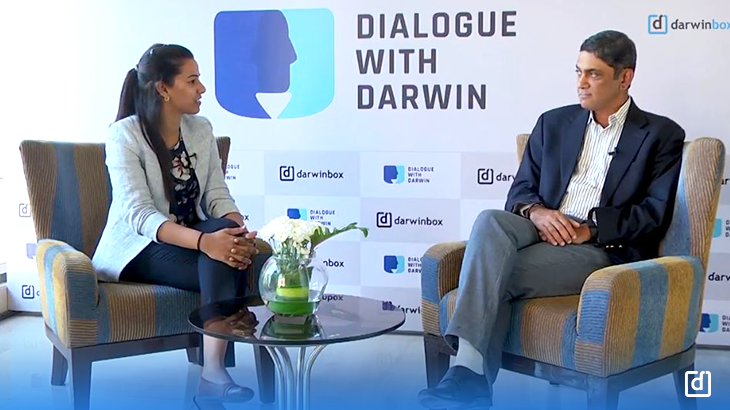
For us at Darwinbox, Dialogue with Darwin has been no less than a thought-provoking and enriching journey. Speaking to some of the most renowned names in the HR Technology space has helped us in knowing how they perceive, and respond to the constant disruptions in the industry today. On the same note, our conversation with Srikanth Karra was surely one to be remembered. Right from upskilling, to evaluation of employee’s performance and cultural fit, and the overarching role that technology plays in all of these, this episode is one that talks about it all!
Here are the highlights we compiled exclusively for you:
Upskilling is the mother of relevance.
We could say this infinite times and this statement can still not be emphasized enough. In order for HR function to be successful at upskilling, there are certain prerequisites it must fulfill. One of them and the most important being thorough business knowledge.
HR is no longer an auxiliary function in the business framework. Therefore, it is essential to know the people, process, and the technology that go into setting the gears rolling within the organization.
Then, once that is done it is as vital as it is natural to play an active role in strategy formulation and implementation. One’s ability to achieve all this rests on two critical aspects. Firstly, the ability to map skills at both high and low level. Secondly, the constant reskilling that helps modern-day HR function stay on top of the game throughout this.
Better talent decisions with a modernized HR framework.
It would be no exaggeration to call talent management one of the most important parts in an organization’s HR roadmap. While this includes managing quality talent, it also has a critical role to play in getting that talent on board. The need of the hour is to identify and map the primary skills, the scope of learning and new skills that can be acquired by the candidate to the requirements of the organization. Then the vision shifts to encouraging and ensuring that this learning happens. Several methods of reward and recognition can be used in this context to subtly reinforce the mentality conducive to value addition.
Value addition as a metric remains subjective. But it is imperative to measure efficiency and ensure that it happens continuously at a pace that can be measured by qualitative or quantitative scales (or both).
Technology shows the way ahead for HR.
The stark realization that the industry needs to have today is that traditional systems built for HR were built to serve as databases and systems of record. Back then, there was no debate about systems being holistic or providing an experience that can be a benchmark. They were scattered and that definitely can’t be the way forward. In order to scale and sail together, technologies must talk to each other and help in extracting intelligent insights from the whole process. Today’s systems are disparate, varied, each bringing with it some kind of merit or the other. Therefore a thorough analysis becomes extremely important before deploying and configuring systems for any enterprise.
Data-driven HR leads to successful successions.
Driving decisions on data have empowered organizations to ace critical processes like merit and succession planning since years now. One needs to compile and understand a huge amount of data to come to a consensus related to planning for the next generation of leadership. There are some variables traits like team engagement, reskilling ability, high performance, etc., that have traditionally been demonstrated by current and hence, potential leaders. It is these traits that the HR technology needs to compile and present in a consumable state for the HR function to understand and benefit from.
One also needs to use data as the tool to map every element of the organization to learnability. And it is this learnability that ultimately translates to leadership potential.
While these were the key takeaways from our conversation, here is the video in case you have missed watching the full version. Watch this space for more such highlights!



Speak Your Mind